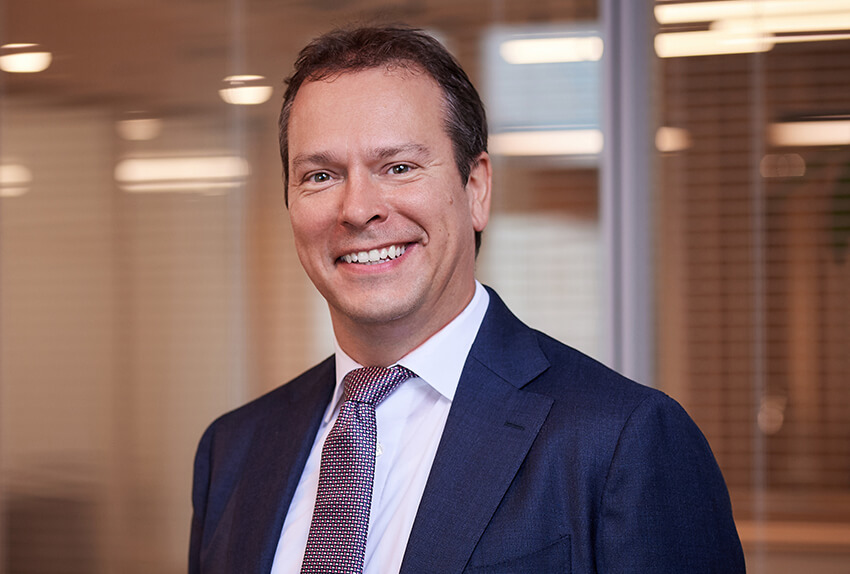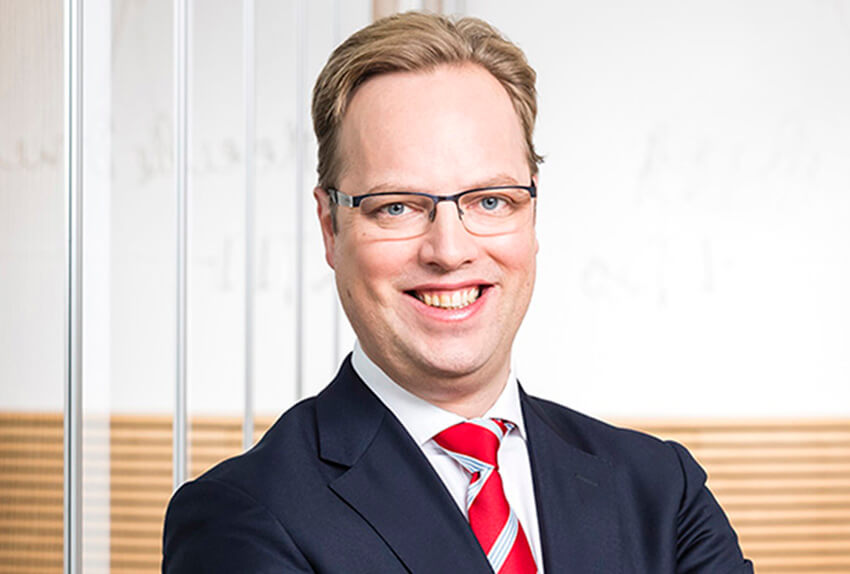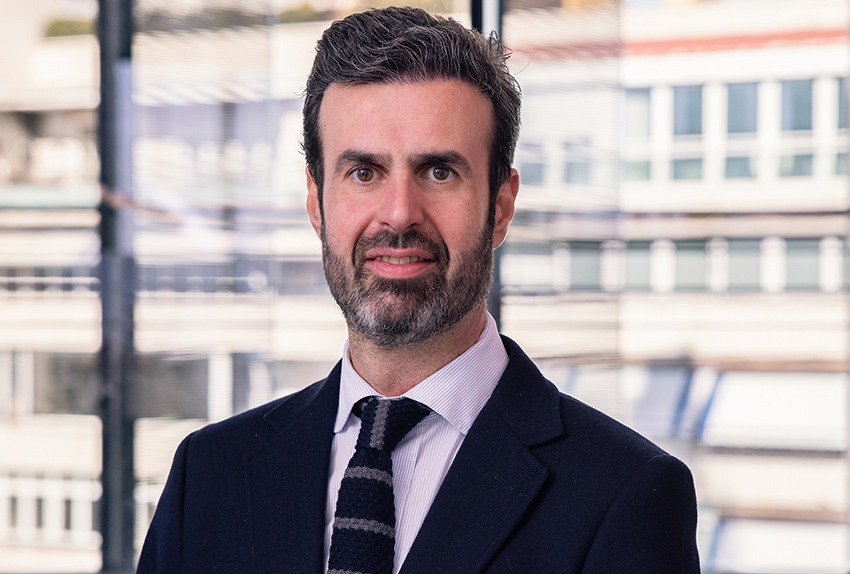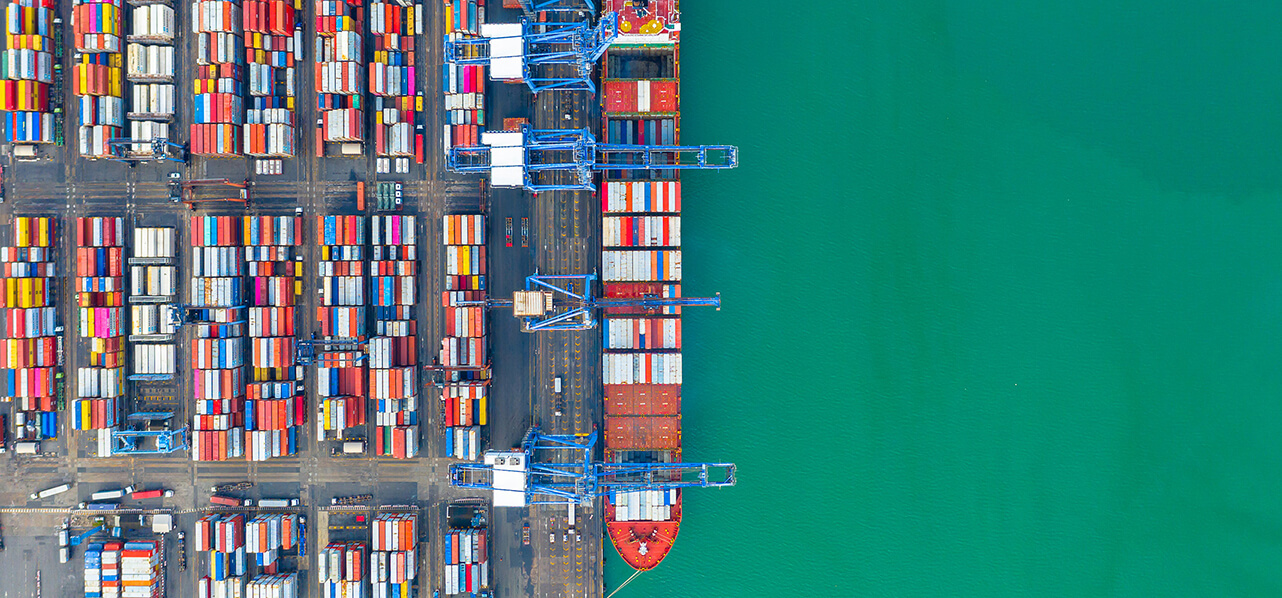Partner Munich
"Hydrogen is not a solution to all the world's problems, but, as Christian stated, 'it is inevitable that there will be a substantial switch in energy consumption across different sectors to hydrogen'."
Welcome and Overview of Topics
Starting off, host, WFW Munich Corporate & Energy Partner Dr Christian Bauer, highlighted the relevance of the event’s focus and the progress made by the hydrogen sector over the last year, touching on the EU Hydrogen Bank, the H2Global Mechanism and Germany’s Carbon Contracts for Difference (“Klimaschutzverträge”) among other things. Hydrogen is not a solution to all the world’s problems, but, as Christian stated, “it is inevitable that there will be a substantial switch in energy consumption across different sectors to hydrogen”. With a zero CO2 footprint if produced from renewable energy sources, as well as many other uses, hydrogen is an important means of driving energy transition, Christian explained. Fellow host Thomas Engelmann, KGAL Head of Energy Transition, noted that “we are now in the middle of the transformation”. This tremendous endeavour requires a great degree of cooperation and coordination meaning that neither “Europe nor Germany alone can ensure its success”. Rather, he added, both national and international strategies are needed.
Update on German Hydrogen Strategy and Discussion
First speaker Till Mansmann, German MP and Innovation Commissioner for Green Hydrogen, German Federal Ministry of Education and Research, shared his views on Germany’s political strategy: “the government’s goal is clear: German hydrogen technology is to become the gold standard worldwide. We want to be a pioneer in technology for the automotive production of large-scale electrolysers”. It is necessary to establish binding standards and certification requirements in order to provide planning certainty for investments, ideally at a worldwide level.
He then highlighted the government’s open mind on using different technology to achieve the national and European emission reduction targets. Instead of choosing one solution a more pluralistic approach is needed: “it would be a big mistake to limit ourselves to one technology”. As an example of this technology-neutral approach, he highlighted the “TransHyDE” project which will enable a deep understanding of the fundamentals of hydrogen transportation. Given the necessary mix of national, European and international projects, transport will play a central role in the hydrogen economy. The methods of transporting hydrogen over long distances through pipelines and on ships (as well as transport to end consumers) therefore need to be developed. In this regard, a robust infrastructure is vital. Whereas private, rather than public funds must take a leading role in the financing of hydrogen development, the state must take responsibility to provide a suitable regulatory framework, ensure development of the required infrastructure and – at least to some extent – also assume risk. Less than three weeks after the event, an update on the national hydrogen strategy was published with further details on the short-term and mid-term steps to be taken.
"Renewable fuels of non-biological origin are going to play a crucial role in the aviation and maritime sectors, where the EU is introducing a variety of new legal provisions as part of its 'Fit for 55' package, Thomas stated. "
Regulatory Framework Green Hydrogen (Update)
WFW Regulatory Partners Dr Maximilian Boemke (Hamburg) and David Diez (Madrid) then provided an update on key regulatory changes. Max discussed the definition of green hydrogen as stipulated in the European “Additionality Delegated Act” and also touched upon the “Methodology Delegated Act” – the latter being particularly important for the proper determination of suitable CO2-sources for the production of renewable fuels of non-biological origin. Both delegated acts are based on the Renewable Energy Directive II (“RED II”). Regarding the “Additionality Delegated Act”, he outlined four cases and the respective requirements for energy to be qualified as renewable. He focussed on the most important one relating to PPAs, where the requirements of additionality, temporal and geographic correlation must be satisfied. Max explained the political background to the rules and the transitional rules as well as the exception for low-carbon bidding zones. He also addressed the relevant provisions for hydrogen production outside Germany and the EU, including the rules applicable to bidding zones, where the average proportion of renewable electricity exceeds 90%.
David covered the situation in Spain and the reaction there to the delegated acts. He discussed their positive impact as well as issues that still need to be addressed, such as coordination with the system of guarantees of origin and the definition of green hydrogen applicable to sectors other than transport. He presented four scenarios for project structuring in Spain considering both the short-, mid- and long-term effects of the delegated act, concluding with an analysis of present challenges and recommendations for the future.
Case Study: EU E-Fuels Market
Mr Engelmann from KGAL and Max from WFW next illustrated the primary challenges for project structuring and contract drafting by means of a case study on the EU’s emerging E-fuels market. Mr Engelmann focussed on the aviation sector with airports and airlines being one of the main off-takers of E-fuels. Renewable fuels of non-biological origin (“RFNBO”) are going to play a crucial role in the aviation and maritime sectors, where the EU is introducing a variety of new legal provisions as part of its “Fit for 55” package, Thomas stated. The concerns of these potential off-takers are therefore unavoidably shaped by pending regulations such as ReFuelEU Aviation, FuelEU Maritime and RED III. Mr Engelmann highlighted that “by 2030 buying certain types of E-fuel will be mandatory, including for off-takers”. Project structuring and contract drafting require a proper understanding of RFNBO (e.g. the exclusion of biomass and suitable CO2-sources) and identifying the best means of production. In that regard, Max explained the relevance of the delegated acts for drafting PPAs as well as agreements for CO2 supply. He addressed the most important topics such as type of delivery, project timeline (relevant to the application of grandfathering provisions and the applicable requirements), securities, counterparty risk as well as potential additional requirements on national level and the need for “reopeners” in a contract in order to reflect them. He highlighted the relevance of CO2-supply agreements which are “even more important than PPAs” and referred to the applicable definition for CO2-supply set out in the Methodology Delegated Act. On the whole, the case study demonstrated the necessity of understanding both suppliers’ and (potential) off-takers’ perspectives and their obligations under EU law.
A Roadmap to Scaling Up Green Hydrogen Production
Luc Graré, Head of Central & Eastern Europe Business at Lhyfe, discussed an example of existing hydrogen production facilities. Having developed and managed projects in several countries (France, Germany, Denmark, Sweden, Netherlands, United Kingdom, Spain and Canada), he has considerable experience in the practical challenges of operating a hydrogen production facility, including the key role of engineers, with a particular focus on offshore wind and its production potential. Raising the question of how such electricity can be brought to land, he argues that the existing Lubmin–Leipzig pipeline can become Germany’s “hydrogen backbone”. This pipeline currently carries natural gas but will be re-purposed for the transport of hydrogen. Thus, a refurbished natural gas network will make it possible to transport 20 GW from north to south across Germany. This is also the future for the 60 GW additional energy generation capacity which will be added on mostly by way of offshore wind expansion in the upper German north, since the grid is highly congested, he explained. This is the reason why Lhyfe is heavily investing in such technology. The French Le Croisic project is the first floating offshore wind project in the world able to produce hydrogen at sea. Another benefit is the huge amount of data and experience that can be obtained from various technical tests going alongside this first of its kind technology, especially the impact of a harsh environment on equipment and related maintenance issues.
"A 'zero CO2 footprint for casting products is impossible'."
Challenges for Manufacturers
Musbah Al-Mansour, Managing Director of DST Defence Service Tracks, discussed a hydrogen application case in the manufacturing sector regarding a producer of military trucks. He flagged the huge amount of energy and gas needed for production as well as the steps required to decarbonise using hydrogen. Important challenges going forward include connecting hydrogen to the grid, high energy prices, automation and CO2 footprint. Against the background of current energy prices, a question arises as to how to catch up with the competition. As to CO2 footprint, casting inevitably result in CO2-emissions. However, the goal of reaching CO2 neutrality can be achieved by recycling CO2. While a “zero CO2 footprint for casting products is impossible”, recycling should make it feasible to get very close to a zero CO2 footprint.
Nujio’qonik Project
Udo Schneider, Managing Director of Green Giraffe Advisory, next introduced the Nujio’qonik chemical plant project in Canada and its stand-out features such as its large capacity, access to a port (crucial for the large-scale transoceanic shipping hydrogen), access to fresh water mitigating the need for desalination, ample space, utilisation rate, key investors as well the financing challenges involved, especially regarding debt financing. He highlighted the differences to past renewables projects which had pre-existing markets, the need for long term off-takes, the challenges smaller developers face in debt financing and the key role of export credit agencies.
Senco Capital
Marcel Werner, Partner at Senco Capital, introduced his company which has a strong focus on private equity investments in the hydrogen sector. Their investment capital comes from public funds, insurance companies, pension funds and institutional investors looking for green portfolio investments offering returns in the short- to mid-term.
Mr Werner stressed that companies developing hydrogen enabling technology, systems and components to larger electrolyser companies have an “order overload” and the demand is much higher than they can supply. These companies need partners not only to provide capital to create new production facilities, but also with deep market understanding. This makes private equity investment crucial for small and decentralised hydrogen projects.
Enapter
Tim Cholibois, Green Hydrogen Strategist at Enapter, provided a technical analysis on the latest developments in hydrogen production via electrolysers. Enapter is a manufacturer of electrolysers in Germany and Italy, specialising in anion exchange membrane (“AEM”) technology which combines the advantages of both alkaline and proton exchange membrane (“PEM”) technology. Though alkaline technology is a tried and proven technology with low costs it has difficulties dealing with renewable energy with intermittent energy supply. For that reason, PEM technology was developed with a higher degree of flexibility, but also significantly higher costs. With its modular approach and use of standardised stacks, AEM offers the best of both worlds, providing the required flexibility while also being affordable as it does not use precious metals such as platinum, titanium, iridium and PFAS. Steel and nickel are used instead providing a strong cost advantage and allowing for economies of scale. Enapter is delivering electrolysers today while continuously improving its manufacturing processes on an ongoing basis.
Activities and Infrastructure for Hydrogen Transport
Rafael Schmidt, Head of Business Development at Hydrogenious, discussed the use of Liquid Organic Hydrogen Carrier (“LOHC”) technology for hydrogen transport. Hydrogenious is a mid-sized company with over 55 patents relating to LOHC, an alternative to ammonia, in the transport of hydrogen. This technology makes it possible to handle hydrogen as an oil – significant for the special use and relevance to long-distance and riverine transportation of hydrogen. It has been designed to provide superior safety, higher flexibility and greater efficiency at a competitive cost: “it has all the advantages of being transported as an oil: existing infrastructure, ships and tanks”.
Key takeaways
The key takeaways from the summit as agreed by all participants are:
- there is clear political support for a technology-driven approach;
- given Germany’s limits on generating enough energy from renewable sources, international import and cooperation is vital;
- Germany aims to become a leader in hydrogen technology and exportation;
- a choice must be made between centralised and decentralised hydrogen production, both of which have advantages and disadvantages. Factors for consideration include capacity, efficiency, costs, noise, safety, potential risks as well as the permitting process and compliance with the delegated acts;
- by converting existing gas pipelines to hydrogen networks, a new hydrogen “backbone” should provide the necessary infrastructure for hydrogen transportation in future;
- CO2-recycling in heavy industry must be further developed;
- the (potential) off-take is a decisive factor for hydrogen projects, with a coordinated approach towards supply and demand;
- the requirements in the delegated acts regarding PPAs and CO2-supply agreements must be taken into account when structuring a project and drafting the relevant contracts;
- risk allocation and correct pricing are critical when drafting contracts, with ECAs key to the former;
- regulations and (future) obligations imposed on stakeholders will be key factors impacting future hydrogen production, particularly for aviation and shipping; and
- many viable options already exist for hydrogen production and transportation. Building a strong hydrogen infrastructure system and promoting green products should be the next key area of focus.
To watch any of these discussions in full you can access our recording of the event here.






